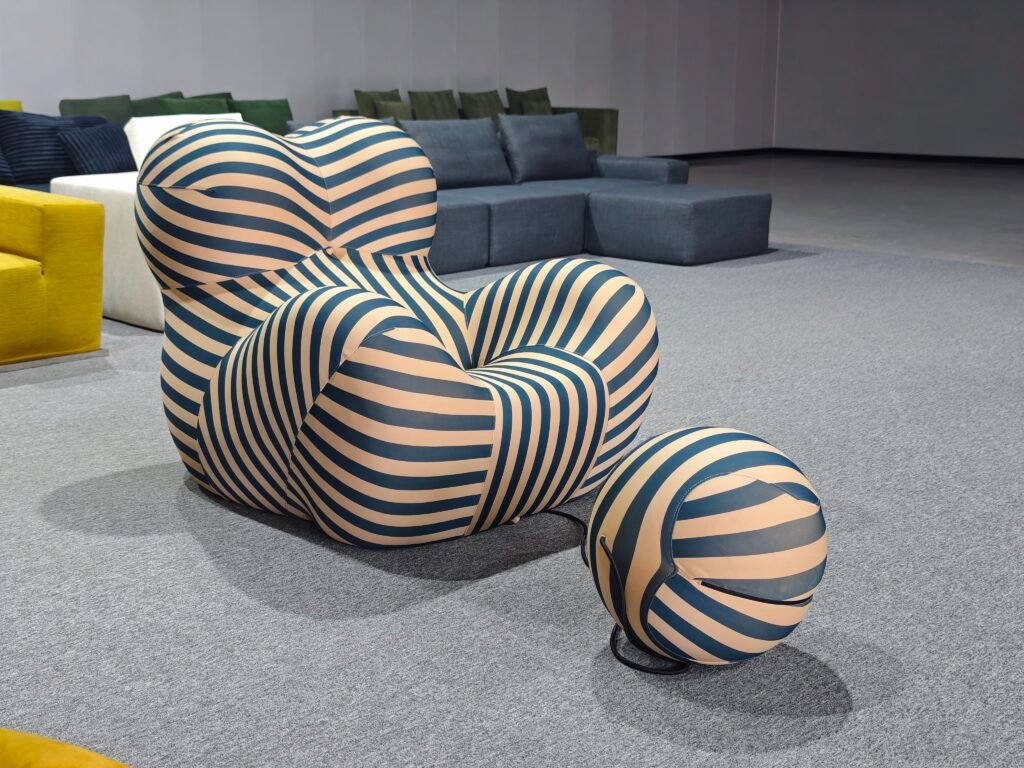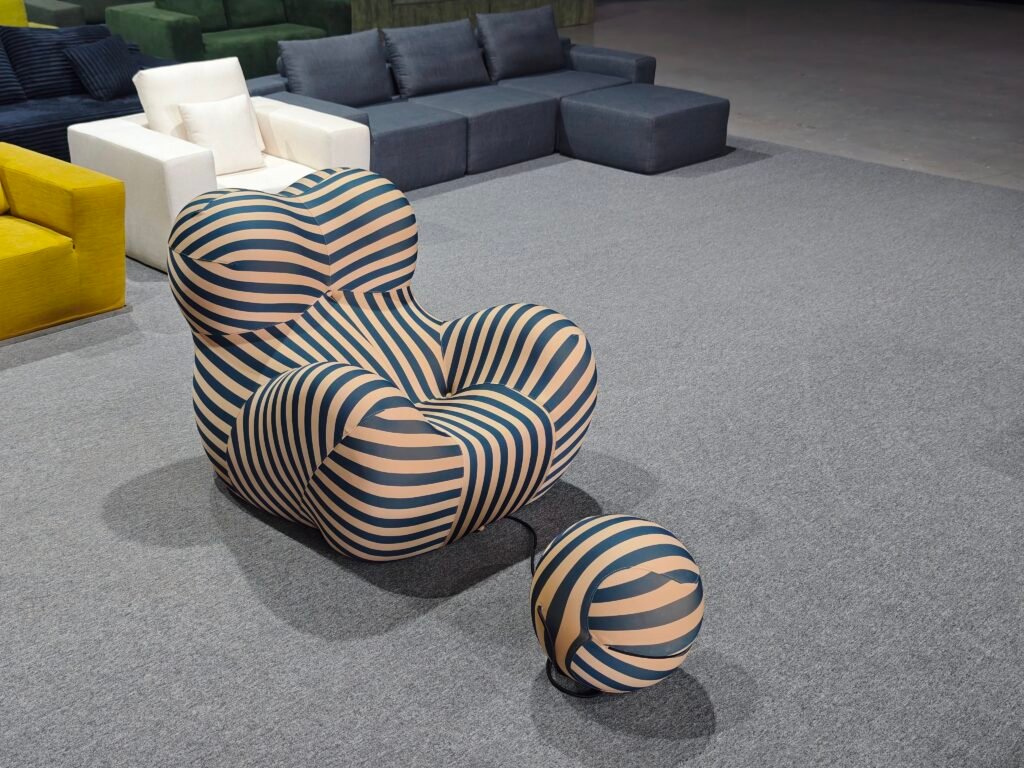The rise of compressed sofas has revolutionized the furniture industry by enabling compact shipping, reduced logistics costs, and easier handling. For retailers, understanding the packaging materials used in compressed sofas is crucial—not only to ensure product protection and customer satisfaction but also to align with growing sustainability demands. Modular Sofas, a leader in modular and compressed sofa solutions, emphasizes innovative, eco-friendly packaging that preserves product integrity while minimizing environmental impact.
This comprehensive guide explores the various packaging materials used in compressed sofa shipping, their roles, advantages, and considerations retailers should keep in mind to optimize storage, transport, and customer experience.


The Importance of Packaging in Compressed Sofas
Compressed sofas undergo vacuum or spring compression, reducing their volume by up to 70-80%. Packaging plays a vital role in:
- Protecting the sofa from damage during transport and storage.
- Maintaining the compressed state until delivery.
- Facilitating easy handling and unpacking.
- Communicating brand values and sustainability efforts.
Retailers must ensure that packaging materials meet these functional needs while also addressing environmental concerns and compliance with regulations.
Common Packaging Materials Used in Compressed Sofas
Corrugated Cardboard
Corrugated cardboard is the primary outer packaging material for compressed sofas. It consists of kraft paper liners and a corrugated medium, providing strength and cushioning.
- Function: Protects against impacts, compression, and abrasion during shipping.
- Types: Single-wall, double-wall, and triple-wall corrugated boards vary by thickness and strength.
- Sustainability: Often made from recycled fibers and is recyclable; FSC-certified cardboard is preferred.
- Advantages: Lightweight, cost-effective, customizable sizes, and printable for branding.
- Considerations: Must be properly sized to avoid excess movement inside the box.
Vacuum-Sealed Plastic Film
Vacuum sealing compresses the sofa by extracting air, reducing volume significantly.
- Function: Maintains compression, protects foam and fabric from moisture, dust, and pests.
- Materials: Typically made from polyethylene (PE) or nylon-polyethylene blends for strength and puncture resistance.
- Sustainability: Conventional plastics pose recycling challenges; some brands are exploring biodegradable or recyclable films.
- Advantages: Enables dramatic volume reduction and protects product.
- Considerations: Retailers should check for ease of removal and disposal instructions for customers.
Foam Inserts and Protective Padding
Foam materials such as polyethylene foam or polyurethane foam are used inside packaging to cushion and stabilize sofa components.
- Function: Absorbs shocks, prevents abrasion, and maintains sofa shape during transit.
- Types: Closed-cell foam (water-resistant, durable) and open-cell foam (softer, more cushioning).
- Sustainability: Foam recycling is limited; some manufacturers use recycled foam or biodegradable alternatives.
- Advantages: Excellent protection, lightweight.
- Considerations: Minimizing foam use reduces waste; consider reusable or recyclable alternatives.
Paper-Based Protective Materials
Honeycomb paper and kraft paper are increasingly used as sustainable internal packaging.
- Function: Acts as void fillers, edge protectors, and cushioning material.
- Advantages: Lightweight, biodegradable, recyclable, and made from renewable resources.
- Considerations: Less protective than foam but suitable for low-impact areas.
Adhesive Tapes and Strapping
Packaging tapes and straps secure the box and vacuum film.
- Materials: Paper tape (eco-friendly), polypropylene (PP) tape, polyester (PET) strapping.
- Sustainability: Paper tapes are biodegradable and recyclable; plastic tapes vary in recyclability.
- Considerations: Use tapes compatible with recycling streams to avoid contamination.
Desiccants and Moisture Barriers
To prevent moisture damage during shipping, desiccants (silica gel packets) and moisture barrier films are used.
- Function: Protect foam and fabric from mold, mildew, and degradation.
- Sustainability: Desiccants are generally non-toxic and recyclable; moisture barrier films should be minimized.
- Considerations: Proper labeling and disposal instructions are important.


Sustainability Considerations in Packaging Materials
Sustainability is a core concern for modern retailers and consumers. Packaging materials for compressed sofas must balance protection with environmental impact.
- Material Reduction: Designing packaging to use the least material necessary without compromising safety.
- Recyclability: Using materials that are widely recyclable or compostable.
- Renewable Content: Sourcing paper and cardboard from FSC-certified forests.
- Waste Minimization: Encouraging reuse of packaging or take-back programs.
- Carbon Footprint: Reducing shipping volume through compression lowers transportation emissions.
Modular Sofas prioritizes recyclable cardboard, minimizes plastic use, and educates customers on responsible disposal.
Practical Advice for Retailers Handling Compressed Sofa Packaging
Retailers should consider the following:
- Verify packaging integrity upon delivery to avoid damaged goods.
- Train staff on proper unpacking techniques to prevent customer complaints.
- Provide clear customer instructions on unpacking and disposal of packaging materials.
- Partner with suppliers committed to sustainable packaging innovations.
- Monitor packaging trends and regulations to stay compliant and competitive.
Table: Overview of Compressed Sofa Packaging Materials
| Packaging Material | Primary Function | Sustainability Aspect | Advantages | Retailer Considerations |
|---|---|---|---|---|
| Corrugated Cardboard | Outer box protection | Recyclable, often FSC-certified | Strong, lightweight, customizable | Ensure proper sizing and strength |
| Vacuum-Sealed Plastic Film | Compression maintenance, moisture barrier | Conventional plastic; emerging eco-films | Enables volume reduction, protects sofa | Check ease of removal and disposal |
| Foam Inserts (PE/PU Foam) | Cushioning and shock absorption | Limited recyclability; some recycled foam | Excellent protection, lightweight | Minimize use; explore sustainable alternatives |
| Honeycomb Paper | Void filling, edge protection | Biodegradable, recyclable | Eco-friendly, lightweight | Less protective; suitable for low-impact areas |
| Adhesive Tape (Paper/PP) | Sealing and securing packaging | Paper tape recyclable; plastic varies | Strong sealing, easy application | Use recyclable tapes to avoid contamination |
| Desiccants (Silica Gel) | Moisture control | Generally recyclable, non-toxic | Protects against mold and mildew | Provide disposal instructions |
The Future of Packaging Materials in Compressed Sofas
Innovation continues in materials science and design to improve compressed sofa packaging:
- Development of biodegradable vacuum films to replace conventional plastics.
- Increased use of molded pulp inserts as sustainable foam alternatives.
- Application of smart packaging with sensors to monitor package condition.
- Greater adoption of modular and reusable packaging systems.
- Enhanced consumer education on recycling and disposal.
Retailers who stay informed and demand sustainable packaging from suppliers will gain competitive advantage and contribute to environmental stewardship.


Conclusion
Understanding the packaging materials used in compressed sofas is essential for retailers to ensure product safety, customer satisfaction, and alignment with sustainability goals. From robust corrugated cardboard to innovative vacuum films and eco-friendly cushioning, each component plays a vital role in the compressed sofa supply chain.
Modular Sofas leads the industry by combining advanced packaging technology with sustainable material choices, offering retailers products that are easy to ship, handle, and sell—all while minimizing environmental impact.
For retailers looking to deepen their knowledge or partner with a trusted compressed sofa supplier, Modular Sofas offers expert guidance and customizable solutions tailored to your market needs.
Visit modular-sofas.com to learn more about our products and packaging innovations.